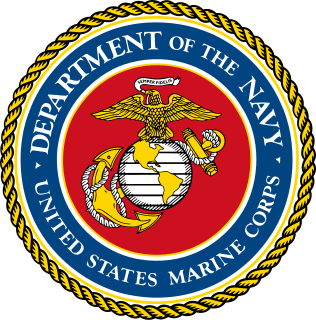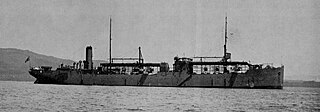Operators
 China
China
| Chiang Gae'n | |
|---|---|
| Role | Reconnaissance/trainer seaplane |
| Manufacturer | Naval Air Establishment |
| Primary user | Republic of China Navy |
The Naval Air Establishment Chiang Gae'n was a reconnaissance/trainer seaplane built in China during the early 1930s.
The Chiang Gae'n was a biplane design with provisions for a pilot and observer, intended to serve as either a reconnaissance aircraft or advanced trainer. [1] [2]
NATO reporting names are code names for military equipment from Russia, China, and historically, the Eastern Bloc. They provide unambiguous and easily understood English words in a uniform manner in place of the original designations, which either may have been unknown to the Western world at the time or easily confused codes. For example, the Russian bomber jet Tupolev Tu-160 is simply called "Blackjack".

The Douglas A-3 Skywarrior is a jet-powered strategic bomber that was developed and produced by the Douglas Aircraft Company. It was designed by Douglas on behalf of the United States Navy, which sought a carrier-capable strategic bomber. During July 1949, Douglas was awarded the contract to produce its design, having bested eight other aircraft companies' submissions. Unlike rival designs, which had aimed for a 100,000 lb (45,000 kg) maximum take-off weight, the Skywarrior was developed for a 68,000 lb (31,000 kg) take-off weight, facilitating its use from the navy's existing Midway-class aircraft carriers. Large portions of the aircraft were produced by the Westinghouse Electric Corporation, including its early Westinghouse J40 turbojet engines, which failed to meet promises and were replaced by the rival Pratt & Whitney J57 engine by mid-1953. On 28 October 1952, the prototype XA3D-1 performed the type's maiden flight.

The Battle of Shanghai was the first of the twenty-two major engagements fought between the National Revolutionary Army (NRA) of the Republic of China (ROC) and the Imperial Japanese Army (IJA) of the Empire of Japan at the beginning of the Second Sino-Japanese War. It lasted from August 13, 1937, to November 26, 1937, and was one of the largest and bloodiest battles of the entire war, later described as "Stalingrad on the Yangtze", and is often regarded as the battle where World War II started. After over three months of extensive fighting on land, in the air and at sea, the battle concluded with a victory for Japan.

Naval aviation is the application of military air power by navies, whether from warships that embark aircraft, or land bases.

Yokosuka Naval Air Technical Arsenal had many names, each depending on the period of its existence, and the circumstances at that time. Many of the names were acronyms that were derived from its military name or designation, which changed from time to time. The arsenal was sometimes known as "Kūgi-shō". The name Yokosuka prevailed however, even though it referred to the Arsenal's location at Yokosuka, Japan.

The Imperial Japanese Navy Air Service was the air arm of the Imperial Japanese Navy (IJN). The organization was responsible for the operation of naval aircraft and the conduct of aerial warfare in the Pacific War.

The United States Marine Corps is organized within the Department of the Navy, which is led by the Secretary of the Navy (SECNAV). The most senior Marine commissioned officer is the Commandant of the Marine Corps, responsible for organizing, recruiting, training, and equipping the Marine Corps so that it is ready for operation under the command of the unified combatant commanders. The Marine Corps is organized into four principal subdivisions: Headquarters Marine Corps, the Operating Forces, the Supporting Establishment, and the Marine Forces Reserve.

Training Squadron 86 (VT-86), also known as the "Chupacabras," is a United States Navy advanced training squadron based at Naval Air Station Pensacola, Florida. They are a training squadron flying the T-45C Goshawk. Their tailcode is F and their radio callsign is ROKT.
The Naval Air Establishment Chiang Hung was a reconnaissance seaplane developed for the Chinese Navy in the late 1920s. It was a conventional biplane design with single-bay, unstaggered wings of equal span and accommodation for the pilot and observer in tandem, open cockpits. The landing gear consisted of twin pontoons.
The Naval Air Establishment was a division of the Chinese Navy established in 1918 in Mamoi to develop seaplanes for maritime reconnaissance, training, and torpedo-bombing. It was transferred to Shanghai in 1931.
An Aviation Regiment was a type of unit employed to organise aircraft and their crews in air combat in the Military Air Forces of the Red Army during the Second World War, the Soviet Air Forces, Soviet Air Defence Forces (PVO) and Soviet Naval Aviation, and since 1991 remain major formations within the Russian Air Force and the Russian Naval Aviation.
INS Utkrosh, is an Indian naval air station under the joint-services Andaman and Nicobar Command of the Indian Armed Forces. It is located near naval base INS Jarawa, on Port Blair in the Andaman & Nicobar Islands.

The WZ-7, also known as Soar Dragon, is an unmanned aerial vehicle of the High-Altitude Long Endurance (HALE) type, featuring an unusual joined, tandem wingplan. As of 2011 it is being developed by the People's Republic of China for reconnaissance and maritime patrol missions.

The Martin RB-57D Canberra was a specialized high-altitude strategic reconnaissance aircraft developed from the Martin B-57 Canberra tactical bomber, a licence-built version of the English Electric Canberra. It was used by the United States Air Force during the 1950s prior to operational use of the Lockheed U-2.
Yeh Changti or Ye Changdi, also known as Robin Yeh, was a pilot in the Republic of China Air Force with the rank of major. A member of the CIA-trained Black Cat Squadron, he flew the American U-2 reconnaissance aircraft to spy on China's nuclear program. He was shot down on 1 November 1963 over Shangrao, Jiangxi and held in mainland China for 19 years. Yeh was released from China in 1982, but not granted permission to return to Taiwan until 1990, living the interim years in the United States.

The Naval Air Force is an armed service of the Vietnam People's Navy that has the function of performing tasks at sea or along the coast and islands by means of the air force such as aircraft combat aircraft, transport helicopters and patrol aircraft, etc. This is a force of the Navy that can coordinate missions with the Vietnam People's Air Force and many situations with similar functions, but the Naval Air Force is still a separate branch of the Vietnam People's Navy.

Notoro (能登呂) was an oiler of the Imperial Japanese Navy commissioned in 1920, which was rebuilt in 1924 into a seaplane tender and in 1941 back into an oiler. She participated in the First Shanghai Incident in 1932 and the Second Sino-Japanese War since 1937. In the fall of 1941, she was rebuilt back into an oiler. On 9 January and 20 September 1943, she was damaged by US Navy submarines but returned to service after repairs. On 29 June 1944, she was hit by two torpedoes launched by submarine USS Flasher. During repairs in Singapore Notoro was again damaged on 5 November 1944, this time by B-29 bombers. No further repairs were made until the end of the war and she was probably scrapped in 1947.